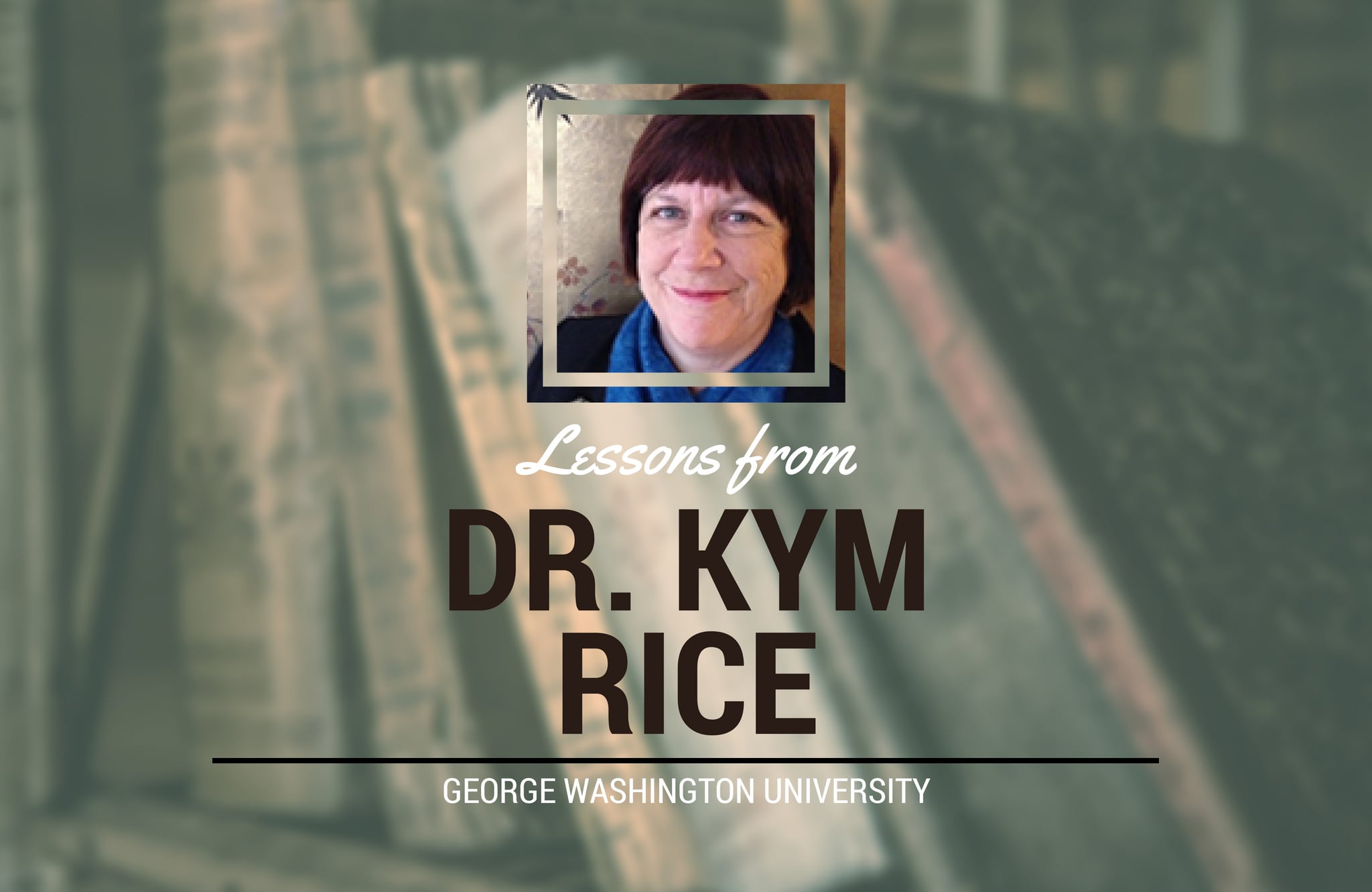Experts in the Field: Lessons from Dr. Kym Rice
Thursday, January 26, 2017 12:30 PM by Taylor Studios in Professional and Industry Tips

Kym Rice, PhD, is the Director and Chair of George Washington University’s Museum Studies Department and a member and former co-chair of AAM’s Committee on Museum Professional Training. She is an expert on Exhibition Development, Curatorial Research, and Historic House Interpretation. Over the years, she has taught hundreds of the industry’s emerging professionals, who have carried her expertise to countless museums, nature centers, and interpretive sites throughout the world. As part of her job, she remains up-to-date with the latest trends in the field, and also with the struggles and limitations faced by many of today’s organizations. We are incredibly blessed this week to have Dr. Rice for an exclusive interview for The Field Journal!
Taylor Studios (TSI): Hello, Dr. Rice – thank you so much for sharing your expertise and knowledge with our audience! Before we dig into questions about museum trends and “pain points,” can you perhaps tell us a little about your background? Where did you study, what sparked your love of museums, and what are you working on currently?
Dr. Kym Rice (KR): I began working in museums right out of college on exhibitions. It brought together my love of history and interest in visual art and cultural objects.
TSI: Do you have a favorite exhibit or exhibition that you’ve either seen or worked on? What exhibit and/or exhibition (anywhere, anytime) has made the greatest impression on you?
KR: There are probably too many to name! And I like exhibitions for different reasons. I do think that the new National Museum of African American History and Culture has some very compelling exhibitions with great artifacts.
TSI: It is 2017. What are some of the biggest “pain points” facing America’s small museums and interpretive centers? What obstacles do they face?
KR: Money is always a problem. It is hard for smaller museums to compete with larger institutions for the same pot of resources. Sometimes, the staffs are not as well trained/experienced and therefore not able to bring 21st century skills to the fore on behalf of their institutions.
TSI: It seems that every day we read about a new museum pioneering virtual reality into their exhibits, or creating some new Disney-like high-tech exhibit, or spending millions of dollars on the latest and greatest screen-based multi-sensory experience. With big city museums utilizing such state-of-the-art technology, is it necessary for small interpretive centers to follow suit? Even if they struggle to afford it, should small museums try to go as “high-tech” as possible?
KR: I think that high-tech is overrated because so much maintenance and upkeep is required. Authentic artifacts and engaging stories are always first on my list. There are many different ways to draw the audience in.
TSI: One “pain point” that small museums will probably always face is funding. They simply do not have the number of funders that big city museums have, nor (typically) as wealthy of funders. How do small museums, often with these limited budgets, truly create engaging exhibits? Is it possible? What are some strategies?
KR: The Portland Museum of Art’s “Object Stories” project is a good model that could be utilized at a very small institution too. Visitors who are Portland residents contributed objects important to them and told simple stories about them. They’ve gone on to do several versions of “Object Stories” on different themes. Individuals not usually attracted to museums have been inspired to participate.
TSI: Another “pain point” is visitor growth. Many small museums throughout the country are finding their visitors aging and their visitorship in decline. One way to grow visitorship is through offering engaging exhibits. Of your exhibits, which have you found to be the most popular among visitors? Why?
KR: To me, strong objects that express the content are paramount. When I do an exhibition, I spend a lot of time finding the material and negotiating the loans. I believe that visitors really appreciate and respond to the authentic, real thing.
TSI: Finally, you are one of the top experts in the field. What is your best advice for someone starting their very first exhibit or museum project?
KR: You need to take the time to learn your craft. Whatever the subject is, become an expert on it so that you can really distill its essence into the exhibition. Brainstorm creative ways to present your ideas. And always, consult with visitors. Test your labels and your ideas out on them first. It really makes a difference.
TSI: Before we let you go, do you have a book, blog, project website, or anything else which you’d like us to tell our readers about? We’d love to help promote all that you do!
KR: I’m working with AASLHright now on a new edition (#4) of G. Ellis Burcaw’s Introduction to Museum Work. Hopefully it will be published later this year.
TSI: Thank you so much, Dr. Rice! And thank you for all that you do for the museum field and for all of your students. Your expertise serves as such an inspiration!
Share this on social networks